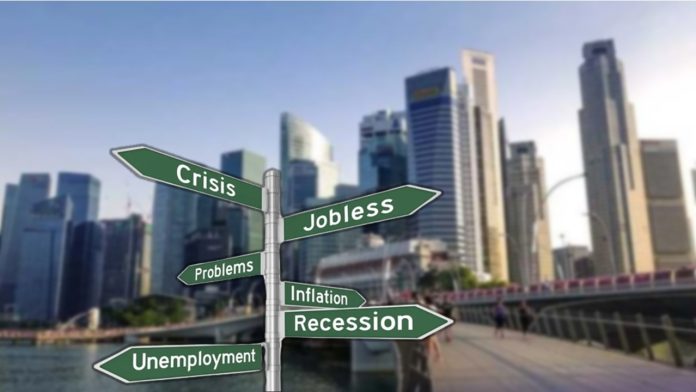Singapore saw a string of poor economic statistics last week, raising fears of a future recession. For the seventh consecutive month, the country’s yearly exports fell, accompanied by slower employment growth, increasing retrenchments, and fewer job openings. These concerning tendencies have prompted questions regarding Singapore’s export-oriented economy and its resilience in the face of global challenges.
Decline in Non-Oil Domestic Exports (NODX)
Singapore’s non-oil domestic exports (NODX) fell 14.7 percent in May, following a 9.8 percent loss in April. The weakening of both electronics and non-electronics exports led to this reduction. Although exports to China and the United States improved slightly, the overall loss was mostly due to the slow markets of Hong Kong, Malaysia, and Taiwan. Notably, NODX to Singapore’s top ten markets fell last month, above economists’ forecasts of a 7.7 percent drop.
Risk of a Technical Recession
With Singapore’s economy dropping 0.4 percent quarter on quarter in the first quarter of the year, coupled with a downturn in global spending and rising interest rates, the probability of a technical recession has increased. Two consecutive quarters of economic downturn constitute a technical recession. Maybank analyst Chua Hak Bin voiced concern that Singapore’s worsening export slowdown shows few indications of turnaround, raising the possibility of a technical recession.
Labor Market Challenges
Singapore’s Ministry of Manpower (MOM) released its first-quarter labour market report for 2023, which highlighted an employment market that is cooling. Job openings fell to 99,600 from 126,000 in the same period the previous year. Furthermore, layoffs increased in the first quarter, with 3,820 employees losing their employment, up from 2,990 in Q4-2022. However, the total number of employed people in Singapore increased for the sixth straight quarter, mostly due to non-resident workers, including a sizable number of Indian workers in the construction and manufacturing industries.
The Role of Indian Workers in Singapore
Indian nationals have contributed significantly to the workforce in Singapore. Singapore’s population of 5.45 million comprised 300,000 ethnic Indians as of June 2021, accounting for around 7.5 percent of the overall population. According to data from the Ministry of External Affairs Consular Services, Indian nationals accounted for around 24 percent of non-residents in Singapore, or 350,000 people.
Any downturn in the job market may have an impact on the trend of Indians seeking career opportunities in Singapore. Indian talent is highly sought after internationally and frequently pursues opportunities abroad. In recent years, the proportion of Indian professionals in Singapore has doubled, reaching 25%, indicating their expanding presence in various kinds of industries.
Concerns
Singapore’s labour market outlook is deteriorating as a result of the tough external environment. Regional banking issues in the United States, China’s sluggish recovery, and the global semiconductor collapse have all led to a deterioration in business condition and employment growth. Given these circumstances, OCBC Bank senior economist Selena Ling stated that a softening labour market outlook is projected, and growth momentum is likely to decrease in the second half of 2023.
Despite the overall downturn, certain industries, such as information and communication technologies and financial services, may continue to experience churn and pockets of opportunity. In the midst of the hard economic situations, these regions may provide some hope.
As Singapore navigates these issues, governments and industry partners must put measures in place to reduce the effects and support long-term economic growth.

